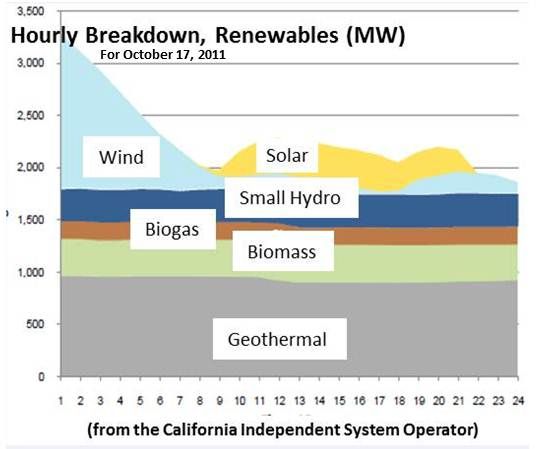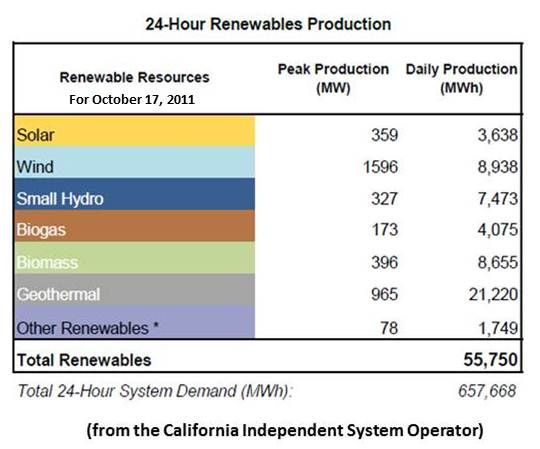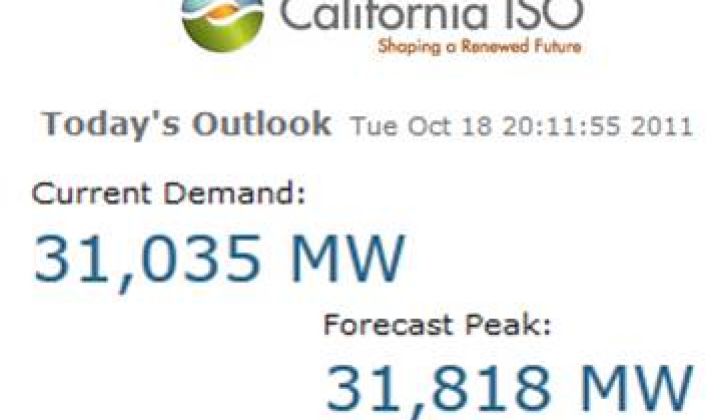Power shortages, skyrocketing rates, and “a financial calamity” proved Detmers right. “I don’t want to see that again,” he said.
Bringing 33 percent renewable energy onto the state’s grid by 2020 is another “major transformation,” Detmers said with the seriousness of someone who has seen the system fail. He founded his Power System Resources consultancy because “we have to take on the responsibility of analyzing this and really understanding,” he continued. “Are we putting a burden on the system that is just going to create more problems?”
Detmers recognizes the need for renewables. “A lot of people say I’m pessimistic,” Detmers said, adding, “I believe we can definitely do it if we focus on making it happen.” But, he cautioned, “If we expect things that are not available from this new supply and we’re not being realistic, that’s when I start raising the red flags.”
_540_449_80.jpg)
The challenge is keeping “supply and demand in balance on the grid around the clock,” as well as “managing the 53,000 megawatts of electricity currently on California’s grid.” Detmers is concerned that decisions are being made by legislators about how much -- and how fast -- renewable energy is to be introduced.
“Do the regulator and the legislators have enough information about what this will take?” Detmers asked. “I’m looking for them to answer the questions rather than just charge off and take us down the road.”
Engineers refer to traditional sources of electricity generation (coal, natural gas, hydroelectric, and nuclear) as 'synchronous' generation, Detmers explained, because they synchronize to the grid’s 60 cycles per second (hertz) frequency. In the event of a source failure, “not only the change in voltage on the system, but also the system frequency is automatically recovered instantaneously by the initial spinning mass on the system.” Replacement generation from traditional sources likewise matches what is there.
“It is dispatchable generation,” Detmers said. “The new technology of inverters,” he went on, referring to the equipment that transfers electricity generated by wind turbines and solar systems to the grid, “just follows whatever the system is doing.” By adding such electricity to the grid, Detmers said, “you are changing the characteristics of the system.”

This is not a small change. “The spinning mass world of existing synchronous generators -- that world is changing,” he explained. “The system is very robust right now as far as what it can take in fluctuations. If a generator comes off-line, it just trips off immediately. If and when that happens, the system will recover.”
In contrast, “Inverter technology does not have spinning mass, so it does not have that capability. We must design the system so that we know we have enough capability to withstand that instantaneous drop of a major generating resource or a major supply coming onto the system,” Detmers said. “The supplies coming in with the inverters, wind and solar and what have you -- they are a disruptive supply. They disrupt because of a loss of fuel” when the wind changes or something obscures the sun.
To maintain the system’s reliability and stability, Detmers said, “we should be thinking seriously about how much mass or spinning reserve we should maintain on the system -- or [about whether] power can be provided from something else.”
Changes are underway. “Things are already being done to monitor system stability,” Detmers said. “Synchrophasors are being installed throughout the system. They are part of the solution because they help you identify what your condition is.” On the other hand, he added, “if you get to the point where you’re watching problems happen, that’s almost too late.”

Bringing on large portions of renewables means “a major transformation,” he reiterated. System operators “should be thinking about what else needs to be designed with the system so that you can safely operate it and eliminate oscillations or instability. You need to have resources that mitigate those problems. Today, those are synchronous generators. Tomorrow, what will it be? That’s what we’ve got to get after.”
That legislators understand there will be costs is also important to Detmers. “When you add wind or solar, you have to make sure you are completing the supply transmission.” Inverter-based generation sources, he said, ultimately require technologies that integrate them, and those technologies will have a cost. Though nobody yet knows how much it will be, that cost will fall on the ratepayer.
But, Detmers said, “I definitely think it is within reach.” More importantly, he added, “We have to get after an understanding of what a plan is to retire the existing resources when we go to 33 percent. I’m not saying we take the cost and add it to wind and solar,” he explained, “I’m saying the power system has design components that have to be answered. We need to focus on what needs to be designed.”
The cost does not have to be onerous, he said, “if we do it right.” But if it is done as an add-on to the existing system, “that does not take us to where we need to go in this transformation.”



